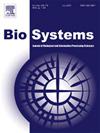Flowing boundaries in autopoietic systems and microniche construction
IF 1.9
4区 生物学
Q2 BIOLOGY
引用次数: 0
Abstract
Organismal boundaries might seem like a straightforward and unproblematic organismal feature to study. They serve as fundamental demarcation lines that differentiate life from its environment, define identity, and maintain the functionality of organisms. But do they amount to an actual demarcation of organismal self? In this paper, we examine the philosophical and biological underpinnings of these boundaries, explore the essentialist and non-essentialist perspectives, and categorise organismal boundaries into three types: life-defining, physical, and those based on structural coupling. We shall argue largely against excessive reliance on physical boundaries, point to the inconsistencies and limitations of such thinking with the help of some formal approaches to boundaries (e.g., Markov blankets or theories such as (M, R) systems or the theory of autopoiesis), and try to harmonise the approaches by introducing a concept of boundary based on structural coupling. Autopoietic systems, such as cells, are structurally coupled to their environment, meaning their structures and those of their environment constantly influence each other. Organisms exhibit varying levels of the coupling capacity, of extending beyond their membranes to modify environments on scales ranging from molecular to planetary. Unicellular organisms, colonies, and multicellular entities construct niches that shape their survival and evolution. Building on the niche construction theory, we introduce the concept of microniches to describe various controlled spaces within organisms whose status of ‘internal’ is not always straightforward from the host perspective (e.g., intercellular spaces, digestive systems, or xylem). In the next step, we explain how these microniches are a direct result of structural coupling and how this concept can explain what is or is not part of a biological entity. We conclude with a discussion of Kantian organic wholes, starting with the cell in its entirety enclosed by a membrane and moving on to higher-order structures such as multicellular organisms or colonies, which differ in how they are established. Organic wholes of various levels are defined by informational boundaries and shared evolutionary norms that enable cohesion, cooperation, and distinction from the external environment across diverse biological and cultural systems. By integrating various philosophical and biological perspectives, we want to deepen our understanding of how life defines and sustains its boundaries and challenge certain established forms of thinking about organismal boundaries, which often rely on the physical or spatial approach.
自创生系统的流动边界与微晶结构。
有机体边界似乎是一个简单而毫无问题的有机体特征。它们作为基本的分界线,将生命与其环境区分开来,定义身份,并维持生物体的功能。但是,它们真的相当于有机自我的实际界限吗?在本文中,我们研究了这些边界的哲学和生物学基础,探索了本质主义和非本质主义的观点,并将有机体边界分为三种类型:生命定义型、物理型和基于结构耦合的边界。我们将在很大程度上反对过度依赖物理边界,指出这种思维在一些正式边界方法(例如,马尔可夫毯或(M, R)系统或自创生理论等理论)的帮助下的不一致性和局限性,并试图通过引入基于结构耦合的边界概念来协调这些方法。自创生系统,如细胞,在结构上与其环境耦合,这意味着它们的结构和它们的环境的结构不断地相互影响。生物体表现出不同程度的耦合能力,可以超越它们的膜,在从分子到行星的尺度上改变环境。单细胞生物、菌落和多细胞实体构建了影响其生存和进化的生态位。在生态位构建理论的基础上,我们引入了微生境的概念来描述生物体内的各种受控空间,这些空间的“内部”状态从宿主的角度来看并不总是直截了当地的(例如,细胞间隙、消化系统或木质部)。在接下来的步骤中,我们将解释这些微生境如何成为结构耦合的直接结果,以及这个概念如何解释什么是或不是生物实体的一部分。最后,我们将讨论康德的有机整体,从被膜包裹的细胞整体开始,然后转向更高阶的结构,如多细胞生物或菌落,它们的建立方式不同。不同层次的有机整体由信息边界和共享的进化规范定义,这些规范使不同生物和文化系统之间的凝聚力、合作和与外部环境的区别得以实现。通过整合不同的哲学和生物学观点,我们希望加深我们对生命如何定义和维持其边界的理解,并挑战某些关于有机体边界的既定思维形式,这些形式通常依赖于物理或空间方法。
本文章由计算机程序翻译,如有差异,请以英文原文为准。
求助全文
约1分钟内获得全文
求助全文
来源期刊

Biosystems
生物-生物学
CiteScore
3.70
自引率
18.80%
发文量
129
审稿时长
34 days
期刊介绍:
BioSystems encourages experimental, computational, and theoretical articles that link biology, evolutionary thinking, and the information processing sciences. The link areas form a circle that encompasses the fundamental nature of biological information processing, computational modeling of complex biological systems, evolutionary models of computation, the application of biological principles to the design of novel computing systems, and the use of biomolecular materials to synthesize artificial systems that capture essential principles of natural biological information processing.
 求助内容:
求助内容: 应助结果提醒方式:
应助结果提醒方式:


